Related Research Articles

Altheimer is a city in Plum Bayou Township, Jefferson County, Arkansas. It is situated on the Union Pacific Railway, 11 miles (18 km) northeast of Pine Bluff. As of the 2010 census it had a population of 984, down from 1,192 at the 2000 census. As of 2018 the estimated population was 829.
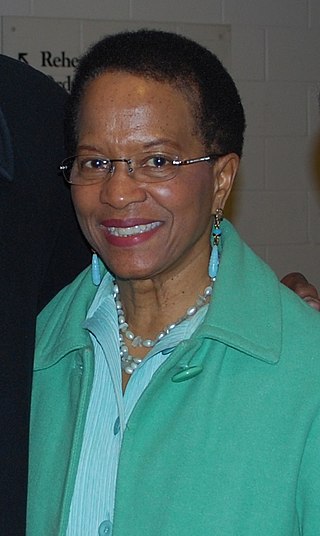
Reatha Belle Clark King is an American chemist, the former vice president of the General Mills Corporation; and the former president, executive director, and chairman of the board of trustees of the General Mills Foundation, the philanthropic foundation of General Mills, Inc.

Henry Ransom Cecil McBay was an American chemist and teacher. McBay won numerous awards for his teaching and mentoring, including the American Chemical Society Award. McBay also co-founded the National Organization for the Professional Advancement of Black Chemists and Chemical Engineers (NOBCChE).
Iota Sigma Pi (ΙΣΠ) is a national honor society in the United States. It was established in 1902 and specializes in the promotion of women in the sciences, especially chemistry. It also focuses on personal and professional growth for women in these fields. As with all honor societies, they create professional networks along with recognizing achievements of women in chemistry.

Mary Lowe Good was an American inorganic chemist who worked academically, in industrial research and in government. Good contributed to the understanding of catalysts such as ruthenium which activate or speed up chemical reactions.
Jennie Patrick is an American chemical engineer and educator. As a high school student, she participated in the integration of Alabama's public schools. At Massachusetts Institute of Technology in 1979, she became one of the first African American women in the United States to earn a doctorate in traditional chemical engineering. She went on to pioneer work on supercritical fluid extraction. Her educational work has focused on the mentoring of African American and female students.
Icie Gertrude Macy Hoobler was an American biochemist who did research in human nutrition, specifically pertaining to mothers and children. Despite facing discrimination because of her gender, she became the first woman chair of a local section of the American Chemical Society and won 22 awards and honors for her laboratory's research.

Mary Lura Sherrill was recognized for her achievements in chemical research, particularly the synthesis of antimalarial compounds, and for her teaching at Mount Holyoke College. In 1947, she received the Garvan Medal, an award for women in chemistry.
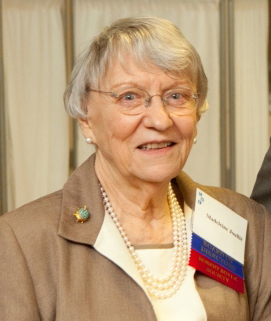
Madeleine M. Joullié is an American-Brazilian organic chemist. She was the first woman to join the University of Pennsylvania chemistry faculty as well as the first female organic chemist to be appointed to a tenure track position in a major American university. She was one of the first affirmative action officers at the University of Pennsylvania. She has a distinguished record as a teacher of both undergraduate and graduate-level organic chemistry, and as a mentor of students.
Margaret Ellen Mayo Tolbert is a biochemist who worked as a professor and director of the Carver Research Foundation at Tuskegee University, and was an administrative chemist at British Petroleum. From 1996 to 2002 she served as director of the New Brunswick Laboratory, becoming the first African American and the first woman in charge of a Department of Energy lab.
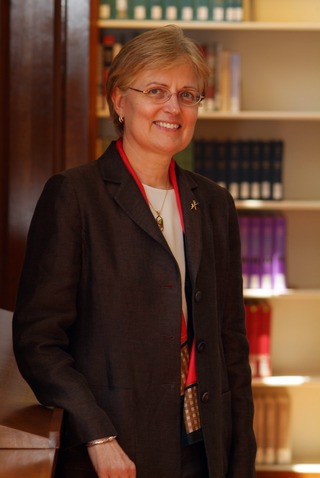
Elsa Reichmanis is an American chemist, who was the 2003 president of the American Chemical Society. She was elected a member of the National Academy of Engineering in 1995 for the discovery, development, and engineering leadership of new families of lithographic materials and processes that enable VLSI manufacturing. She was also inducted into the National Academy of Inventors in 2020. She is currently the Anderson Endowed Chair in Chemical and Biomolecular Engineering at Lehigh University. She previously served on the faculty at The Georgia Institute of Technology. Reichmanis is noted for her research into microlithography, and is credited for contributing to the "development of a fundamental molecular level understanding of how chemical structure affects materials function leading to new families of lithographic materials and processes that may enable advanced VLSI manufacturing".

Jeannette Elizabeth Brown is a retired American organic medicinal chemist, historian, and author.

Angie Lena Turner King was an American chemist, mathematician, and educator. King was an instructor of chemistry and mathematics at West Virginia State High School, and a professor of chemistry and mathematics at West Virginia State College in Institute.
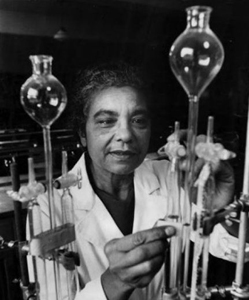
Mary Elliott Hill was one of the earliest African-American women to become a chemist. She was known as both an organic and analytical chemist. Hill worked on the properties of ultraviolet light, developing analytic methodology, and, in collaboration with her husband Carl McClellan Hill, developing ketene synthesis which supported the development of plastics. She is believed to be one of the first African-American women to be awarded with a master's degree in chemistry. Hill was an analytical chemist, designing spectroscopic methods and developing ways to track the progress of the reactions based on solubility.
Altheimer Unified School District No. 22, previously the Altheimer-Sherrill School District, was a school district headquartered in Altheimer, Arkansas. It served Altheimer, Sherrill, Wabbaseka, and other portions of Jefferson County, including the unincorporated areas of Lake Dick, New Gascony, Pastoria, Plum Bayou, Sweden, Tucker, and Wright. The district in the 1993-2006 period had 333 square miles (860 km2) of territory.
Altheimer-Sherrill High School was a junior and senior high school in Altheimer, Arkansas, United States, operated by the Altheimer-Sherrill School District, and later the Altheimer Unified School District. At the time of its closing it served Altheimer, Sherrill, Wabbaseka, and other portions of Jefferson County, including the unincorporated areas of Tucker, Plum Bayou, Pastoria, and Wright.
Jeanette Grasselli Brown is an American analytical chemist and spectroscopist who is known for her work with Standard Oil of Ohio as an industrial researcher in the field of spectroscopy.

Johnnie Hines Watts Prothro was an American nutritionist in the Southern United States whose career spanned the eras of racial segregation, Jim Crow laws, and the passing of the Civil Rights Act and Voting Rights Act. She was one of the first African American nutritionists and food scientists.
Rubye Mayette Prigmore Torrey was a notable African American female chemist and educator. She earned her bachelor's and master's degree at Tennessee State University and her PhD from Syracuse University. Her main research interests included food chemistry, the electroanalysis of drinking water and human hair, and research ethics. She is known for developing a mechanism to decompose hydrogen sulfide, which earned her a place in Sigma Xi.
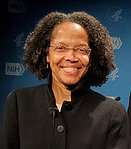
Gilda A. Barabino is the president of the Olin College of Engineering, where she is also a professor of biomedical and chemical engineering. Previously, she served as the dean of The Grove School of Engineering at the City College of New York, and as a professor in the Departments of Biomedical Engineering and Chemical Engineering and the CUNY School of Medicine. On March 4, 2021, she became the President-Elect of the American Association for the Advancement of Science.
References
- ↑ "Administration". Morris Brown College. Archived from the original on October 3, 2015. Retrieved October 3, 2013.
- 1 2 Wayne, Tiffany K. (January 1, 2011). American Women of Science Since 1900. ABC-CLIO. ISBN 9781598841589.
- ↑ Center for Oral History. "Gloria L. Anderson". Science History Institute .
- 1 2 3 4 5 6 7 8 9 10 11 12 13 14 15 16 17 18 19 20 21 22 23 24 25 26 Brown, Jeannette E. (Jeannette Elizabeth), 1934- (2012). African American women chemists. New York: Oxford University Press. ISBN 978-0-19-990961-2. OCLC 761692608.
{{cite book}}: CS1 maint: multiple names: authors list (link) - 1 2 3 4 5 6 7 8 Brown, Jeannette E. (August 21, 2009). Gloria L. Anderson, Transcript of Interview Conducted by Jeannette E. Brown at Morris Brown College Atlanta, Georgia on 21 August 2009 (PDF). Philadelphia, PA: Chemical Heritage Foundation.
- 1 2 3 4 5 6 7 8 9 10 11 12 13 14 15 16 17 18 19 20 21 22 23 24 25 26 27 28 29 30 31 32 33 34 35 36 37 38 39 40 41 42 43 44 45 46 47 48 49 50 51 52 53 54 55 56 57 58 59 60 61 62 63 64 65 66 67 68 69 70 71 72 73 74 75 76 77 78 Gloria L Anderson, interview by Jeannette E. Brown at Morris Brown College, Atlanta, Georgia, 21 August 2009 (Philadelphia: Chemical Heritage Foundation, Oral History Transcript #0673, (with subsequent corrections and additions), as part of the oral history project initiated by the Chemical Heritage Foundation and Iowa State University Library. Abstract retrieved from: https://oh.sciencehistory.org/sites/default/files/anderson_gl_0673_suppl.pdf Full Text available from the Chemical Heritage Foundation (Free Access)
- ↑ "Anderson, Gloria L." Who's Who Among African Americans. 19th ed. Detroit: Gale, 2006. 29. Gale Virtual Reference Library. Web. 8 Apr. 2016.
- 1 2 3 4 5 6 7 8 9 10 11 12 13 14 15 16 17 18 19 Warren, Wini (January 1, 1999). Black Women Scientists in the United States . Indiana University Press. ISBN 0253336031.
- 1 2 3 "Gloria Anderson". The HistoryMakers. March 17, 2012. Archived from the original on October 2, 2013. Retrieved September 27, 2013.
- 1 2 3 4 5 6 7 Spangenburg, Ray; Moser, Diane (2003). African Americans in Science, Math, and Invention. Infobase Publishing. pp. 4–6. ISBN 978-1-4381-0774-5 . Retrieved September 27, 2013.
- ↑ Anderson, Gloria L.; Stock, Leon M. (1969). "Chemistry of the bicyclo[2.2.2]octanes. IX. Chemical shifts for bicyclic fluorides". Journal of the American Chemical Society. 91 (24): 6804–6808. doi:10.1021/ja01052a044. ISSN 0002-7863.